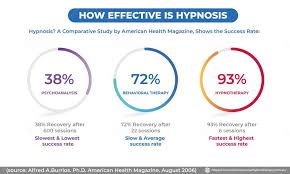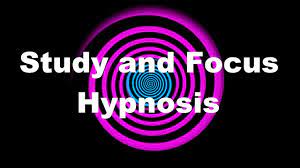The subconscious mind is a powerful tool that can greatly influence our thoughts, feelings, and behavior. It is the part of our mind that operates below our conscious awareness and is responsible for storing our memories, beliefs, and emotions. Subconscious mind therapy is a form of therapy that aims to access and reprogram these stored beliefs and emotions in order to improve our mental and emotional well-being.
The goal of subconscious mind therapy is to help individuals identify and overcome negative thought patterns, limiting beliefs, and self-sabotaging behaviors that may be holding them back from achieving their goals. This type of therapy can be used to address a wide range of issues, including anxiety, depression, phobias, addiction, and chronic pain.
One of the most common techniques used in subconscious mind therapy is hypnotherapy. Hypnotherapy involves inducing a state of deep relaxation in which the individual becomes highly suggestible. This allows the therapist to access the individual’s subconscious mind more easily and make positive suggestions or affirmations that can help to reprogram negative thought patterns.
Another technique used in subconscious mind therapy is guided imagery. Guided imagery involves using visualization techniques to create positive mental images that can help individuals overcome negative thoughts or emotions. For example, an individual with anxiety may be guided through a visualization exercise where they imagine themselves in a peaceful setting such as a beach or forest.
Subconscious mind therapy can also involve other types of therapies such as cognitive-behavioral therapy (CBT) or neuro-linguistic programming (NLP). CBT helps individuals identify negative thought patterns and replace them with more positive ones while NLP focuses on language patterns and how they affect our behavior.
Overall, subconscious mind therapy can be an effective way to address underlying emotional or psychological issues that may be holding us back from living our best lives. By accessing the power of the subconscious mind through techniques such as hypnotherapy or guided imagery, we can reprogram our beliefs and behaviors and create a more positive and fulfilling life.
Frequently Asked Questions About Subconscious Mind Therapy: Everything You Need to Know
- What is subconscious mind therapy?
- How does subconscious mind therapy work?
- What are the benefits of subconscious mind therapy?
- Are there any risks associated with subconscious mind therapy?
- How can I access subconscious mind therapy?
What is subconscious mind therapy?
Subconscious mind therapy is a type of therapy that aims to access and reprogram the subconscious mind in order to improve mental and emotional well-being. The subconscious mind is the part of our mind that operates below our conscious awareness and is responsible for storing our memories, beliefs, and emotions. Subconscious mind therapy can be used to address a wide range of issues, including anxiety, depression, phobias, addiction, and chronic pain.
One of the most common techniques used in subconscious mind therapy is hypnotherapy. Hypnotherapy involves inducing a state of deep relaxation in which the individual becomes highly suggestible. This allows the therapist to access the individual’s subconscious mind more easily and make positive suggestions or affirmations that can help to reprogram negative thought patterns.
Another technique used in subconscious mind therapy is guided imagery. Guided imagery involves using visualization techniques to create positive mental images that can help individuals overcome negative thoughts or emotions. For example, an individual with anxiety may be guided through a visualization exercise where they imagine themselves in a peaceful setting such as a beach or forest.
Subconscious mind therapy can also involve other types of therapies such as cognitive-behavioral therapy (CBT) or neuro-linguistic programming (NLP). CBT helps individuals identify negative thought patterns and replace them with more positive ones while NLP focuses on language patterns and how they affect our behavior.
Overall, subconscious mind therapy can be an effective way to address underlying emotional or psychological issues that may be holding us back from living our best lives. By accessing the power of the subconscious mind through techniques such as hypnotherapy or guided imagery, we can reprogram our beliefs and behaviors and create a more positive and fulfilling life.
How does subconscious mind therapy work?
Subconscious mind therapy is a form of therapy that aims to access and reprogram the subconscious mind in order to improve an individual’s mental and emotional well-being. It works by helping individuals identify and overcome negative thought patterns, limiting beliefs, and self-sabotaging behaviors that may be holding them back from achieving their goals.
The subconscious mind is the part of our mind that operates below our conscious awareness and is responsible for storing our memories, beliefs, and emotions. These stored beliefs and emotions can greatly influence our thoughts, feelings, and behavior. Subconscious mind therapy aims to access these stored beliefs and emotions in order to reprogram them.
One of the most common techniques used in subconscious mind therapy is hypnotherapy. Hypnotherapy involves inducing a state of deep relaxation in which the individual becomes highly suggestible. This allows the therapist to access the individual’s subconscious mind more easily and make positive suggestions or affirmations that can help to reprogram negative thought patterns.
During a hypnotherapy session, the therapist will guide the individual into a state of deep relaxation using verbal cues and relaxation techniques. Once the individual is in this relaxed state, the therapist will then make positive suggestions or affirmations that are tailored to the individual’s specific needs. These suggestions may be focused on overcoming anxiety, improving self-esteem, or reducing stress levels.
Another technique used in subconscious mind therapy is guided imagery. Guided imagery involves using visualization techniques to create positive mental images that can help individuals overcome negative thoughts or emotions. For example, an individual with anxiety may be guided through a visualization exercise where they imagine themselves in a peaceful setting such as a beach or forest.
Subconscious mind therapy can also involve other types of therapies such as cognitive-behavioral therapy (CBT) or neuro-linguistic programming (NLP). CBT helps individuals identify negative thought patterns and replace them with more positive ones while NLP focuses on language patterns and how they affect our behavior.
Overall, subconscious mind therapy works by accessing the power of the subconscious mind through techniques such as hypnotherapy or guided imagery. By reprogramming negative beliefs and behaviors, individuals can create a more positive and fulfilling life.
What are the benefits of subconscious mind therapy?
Subconscious mind therapy, also known as subconscious reprogramming or hypnotherapy, has numerous benefits for our mental and emotional well-being. Here are some of the key benefits of subconscious mind therapy:
- Overcoming negative thought patterns: Subconscious mind therapy can help individuals identify and overcome negative thought patterns that may be holding them back from achieving their goals. By accessing the subconscious mind, therapists can help individuals reprogram their beliefs and behaviors to create more positive outcomes.
- Reducing anxiety and stress: Subconscious mind therapy can be highly effective in reducing anxiety and stress levels by helping individuals relax and release tension from their body. Techniques such as guided imagery or progressive muscle relaxation can promote relaxation and reduce feelings of anxiety.
- Managing chronic pain: Subconscious mind therapy can also be effective in managing chronic pain by helping individuals change the way they perceive pain. Hypnotherapy has been shown to be particularly effective in reducing pain levels in individuals with conditions such as fibromyalgia.
- Improving sleep quality: Subconscious mind therapy can also improve sleep quality by addressing underlying issues that may be affecting sleep, such as stress or anxiety. By promoting relaxation and reducing tension, individuals may experience more restful sleep.
- Enhancing self-esteem: Subconscious mind therapy can help individuals improve their self-esteem by promoting positive self-talk and affirmations. By changing negative beliefs about oneself, individuals can build a more positive self-image.
- Overcoming phobias and addictions: Subconscious mind therapy has been shown to be effective in overcoming phobias and addictions by helping individuals reprogram their responses to certain stimuli.
Overall, there are many benefits to subconscious mind therapy for our mental and emotional well-being. By accessing the powerful tool of the subconscious mind, we can overcome negative thought patterns, reduce stress levels, manage chronic pain, improve sleep quality, enhance self-esteem, and overcome phobias and addictions.
Are there any risks associated with subconscious mind therapy?
Subconscious mind therapy, such as hypnotherapy and guided imagery, is generally considered safe and has few risks associated with it. However, as with any form of therapy or treatment, there are some potential risks to be aware of.
One risk associated with subconscious mind therapy is the possibility of creating false memories. During hypnotherapy, individuals may be more susceptible to suggestion and may inadvertently create false memories or beliefs. This is why it’s important to work with a qualified and experienced therapist who can guide the process in a safe and effective way.
Another risk is the possibility of experiencing intense emotions or psychological distress during therapy. This can happen if individuals uncover deeply buried emotions or beliefs that they were not previously aware of. It’s important for therapists to provide a safe and supportive environment for individuals to process these emotions and work through them in a healthy way.
In rare cases, hypnotherapy can trigger an adverse reaction in individuals with certain mental health conditions such as schizophrenia or bipolar disorder. It’s important for individuals with these conditions to speak with their healthcare provider before undergoing any form of subconscious mind therapy.
Overall, subconscious mind therapy is considered safe when conducted by a qualified professional in a controlled setting. It’s important for individuals to discuss any concerns or potential risks with their therapist before beginning treatment.
How can I access subconscious mind therapy?
Accessing subconscious mind therapy can be done in several ways. Here are some options:
- Find a qualified therapist: Look for a therapist who specializes in subconscious mind therapy, such as hypnotherapy or guided imagery. You can search for therapists online or ask for referrals from your doctor, friends, or family members.
- Attend workshops: Many therapists and wellness centers offer workshops on subconscious mind therapy techniques such as meditation, visualization, and self-hypnosis.
- Use self-help resources: There are many books, CDs, and apps available that can guide you through subconscious mind therapy techniques such as hypnosis or guided imagery.
- Online sessions: With the advent of technology, you can also access subconscious mind therapy online through video conferencing platforms with certified therapists who offer these services.
It’s important to note that while accessing the power of the subconscious mind can be beneficial for many people, it is not a replacement for medical treatment for mental health disorders. It’s always best to consult with a healthcare professional if you have concerns about your mental health or if you’re experiencing symptoms of anxiety or depression.
In summary, accessing subconscious mind therapy is possible through finding a qualified therapist, attending workshops, using self-help resources like books and apps, and even online sessions with certified therapists who offer these services. Whatever method you choose to access this type of therapy, it’s important to remember that it can be an effective way to address underlying emotional or psychological issues that may be holding us back from living our best lives.




